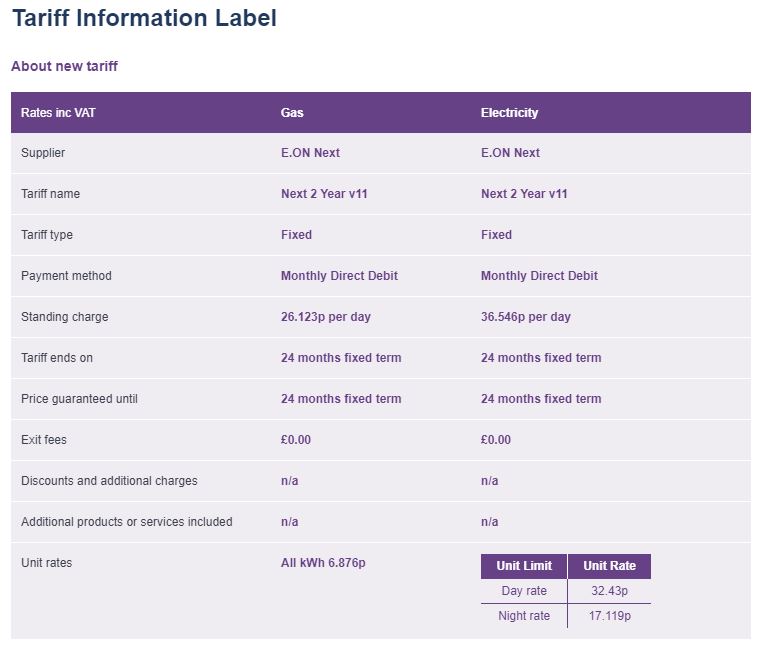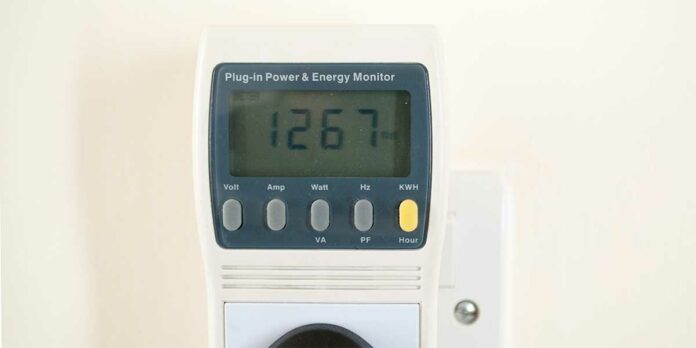The cost of electricity and gas has been in the news lately. With good reason. Wholesale costs, particularly gas, are spiralling to such an extent that numerous firms are going bust on a weekly basis.
Take my supplier, Octopus Energy, as an example. My previous tariff known by the catchy name of Flexible Octopus October 2020 v1 is by its very name variable. Here is how the tariff measured up during October and November 2021.
| Oct 2021 | Nov 2021 | Increase | |
|---|---|---|---|
| Electricity Day Rate (kWr) | 18.84p | 20.60p | 9.3% |
| Electricity Night Rate (kWr) | 11.27p | 14.70p | 30.4% |
| Electricity Standing Charge (per day) | 22.06p | 23.85p | 8.1% |
| Gas Rate (kWr) | 2.88p | 3.76p | 30.6% |
| Gas Standing Charge (per day) | 19.64p | 23.85p | 21.4% |
Numbers such as these don’t mean much for anyone not paying the utility bill, but still don’t rush into fixing a contract for any length of time, as companies have inflated costs sharply.
Even jumping on to the Ofgem price cap is no guarantee of attractive pricing. Using Typical Domestic Consumption Values (TDCV) of 2,900kWh of electricity (21p/kWhr) and 12,000kWh of gas (4p/kWr), the energy regulator reckons your yearly bill will be £1,237 effective October 1. That’s all well and fine if you run a tight energy ship, yet my household’s current usage puts our ‘price cap’ cost at around £1,700. It’s not quite that much as the new variable rate is a shade lower than the figures quoted for the cap.
The incessant increases in gas prices will most keenly be felt as the weather continues to worsen because the UK has more reliance on gas central heating than most European countries. Electricity usage also remains a concern.
Figuring out the financial increase in gas cost is related directly to usage, so for my tech-heavy household, if things stay the same, running at a yearly 16,200kWr, I’ll have to stump up an additional £142.56 for usage and £15.37 yearly charge. It’s likely this figure will escalate as the variable rate increases.
The true cost of keeping tech turned on
The real purpose of this article is to educate the reader into better appreciating just how much electricity is being used by common tech products, discuss strategies to reduce it, and see how much money one can save by doing without. Unlike gas, which is typically only tied to central heating and a stove – necessities, if you will – electricity is pulled from potentially 50 sources and is often wasted. Knowing how much each one is likely to cost is a good method of learning what to use and when.
“The incessant increases in gas prices will most keenly be felt as the weather continues to worsen”
What follows details multiple tiers of electricity usage. Low-usage consumption is defined as running that particular appliance for three hours a day, five days a week. Mid-usage consumption is set to six hours a day, six days a week, and, finally, high-usage is calculated on the basis of nine hours per day, seven days a week.
Of course, some folk leave computers on 24/7 and the final figure, however unrealistic, reflects this. You wouldn’t run an PlayStation 5 all day and all night, would you?, but the fridge and/or freezer is a continuous guzzling beast. To make things interesting we’ll include common household appliances as a point of reference.
Annual usage costs
| Watts | Low | Mid | High | 24/7 | |
|---|---|---|---|---|---|
| PlayStation 5 | 198W | £31.81 | £76.35 | £133.62 | N/A |
| Microsoft Xbox Series S | 85W | £13.66 | £32.78 | £57.36 | N/A |
| Philips 75in Ambilight TV | 132W | £21.29 | £50.90 | £89.03 | N/A |
| Club386 Test PC (idle) | 49W | £7.87 | £18.90 | £33.07 | £75.76 |
| Club386 Test PC (2D load) | 202W | £32.46 | £77.90 | £136.32 | N/A |
| Club386 Test PC (gaming) | 457W | £73.43 | £176.23 | £308.41 | N/A |
| Surface Laptop (plugged in) | 24W | £3.86 | £9.25 | £16.20 | N/A |
| Sky HD+ box | 27W | £4.34 | £10.41 | £18.22 | £41.74 |
| Philips 43in UHD PC monitor | 95W | £15.26 | £36.63 | £64.11 | N/A |
| iiyama 34in UWQHD PC monitor | 33W | £5.30 | £12.73 | £22.27 | N/A |
| Samsung fridge freezer | 32W | N/A | N/A | N/A | £49.48 |
| Hotpoint chest freezer | 35W | N/A | N/A | N/A | £54.11 |
| Tumble dryer | 2,800W | N/A | £112.47 | N/A | N/A |
| Electric shower | 9,000W | N/A | £225.06 | N/A | N/A |
Analysis
Let me pick out some interesting examples from around my own home. The ‘Max’ figure has been calculated by averaging out the day and night cost; all other figures take in the day cost only.
Let’s start with components used more often for shorter periods. Gaming on the PlayStation 5 isn’t exactly cheap. Low usage will set you back £32 a year, probably more if you’re an ardent disciple. Sure, that’s less than the cost of a single PS5 game, but every little counts. The more frugal Xbox Series S does far better in this regard.

You may think it’s not big deal to leave the PC on all the time. Doing so can cost up to £75 a year, going by calculations and on a high-performance rig, so that’s food for thought. Hit standby whenever you can. Having an RTX 3080 and Ryzen 9 5950X is all well and good, yet if you are gaming on that rig and using a 43in UHD monitor from Philips, expect it to cost a combined £90 a year on low usage and a whopping £372 if you have the time and patience to go for marathon gaming sessions day in and day out! Maybe, just maybe, it’s worth getting that rig mining when it’s not gaming?
“Anyone mining cryptocurrency for a profit absolutely needs to take electricity into account”
Speaking of which, anyone mining cryptocurrency for a profit absolutely needs to take electricity costs into account. We put together a quick three-GPU rig producing 170MH/s for Ethereum. Tuned for the task by lowering the core clocks whilst boosting memory, the rig pulls 412W from the wall, putting annual running costs at around around £640 at current levels.
Even innocuous devices can be deemed guzzlers on a 24/7 basis. Do you forget to turn off the Sky box and rarely activate standby mode? That’ll cost you over £40 for the year. How about watching lots of TV on a very large screen. That’s £90 a year, thank you very much.
Adding a freezer into the garage is obviously more costly than the ticket price. Though there isn’t much in my larder freezer, it costs over £50 a year to run, which makes me wonder whether it really is worth it. Right now, it’s not, so I may well get rid of it.
Then there’s stuff you use more sporadically. My tumble dryer will chew through 560kWr over the year based on 160 weighted drying cycles. That’s another £112 out of the coffers, while the two of us having a 10-minute 9kW electric shower each, every day, adds up to another £225 hit to the rapidly depleting wallet.
Prices are going one way: up
All of these figures are likely to rise by quite a lot once utility companies can raise the variable rate. In fact, running through a number of online tariff calculators is an onerous process because they recommend not switching from a variable, capped rate at all. For example, at the time of writing, moving to a 24-month fixed E.ON Next tariff increases costs tremendously. How does 6.876p/kWr grab me for gas? Not at all, because that is 138 per cent more than I paid a month ago.

Elevated energy prices show no signs of abating in the near term. It is very likely that the next Ofgem price cap in April 2022 will introduce much higher increases than the one in October 2021. There is no other way of stopping many more small- and medium-sized utility companies going bust. That is why it literally pays to keep a very close eye on consumption, and we hope this article has been of some help in determining electricity usage for common tech devices.

